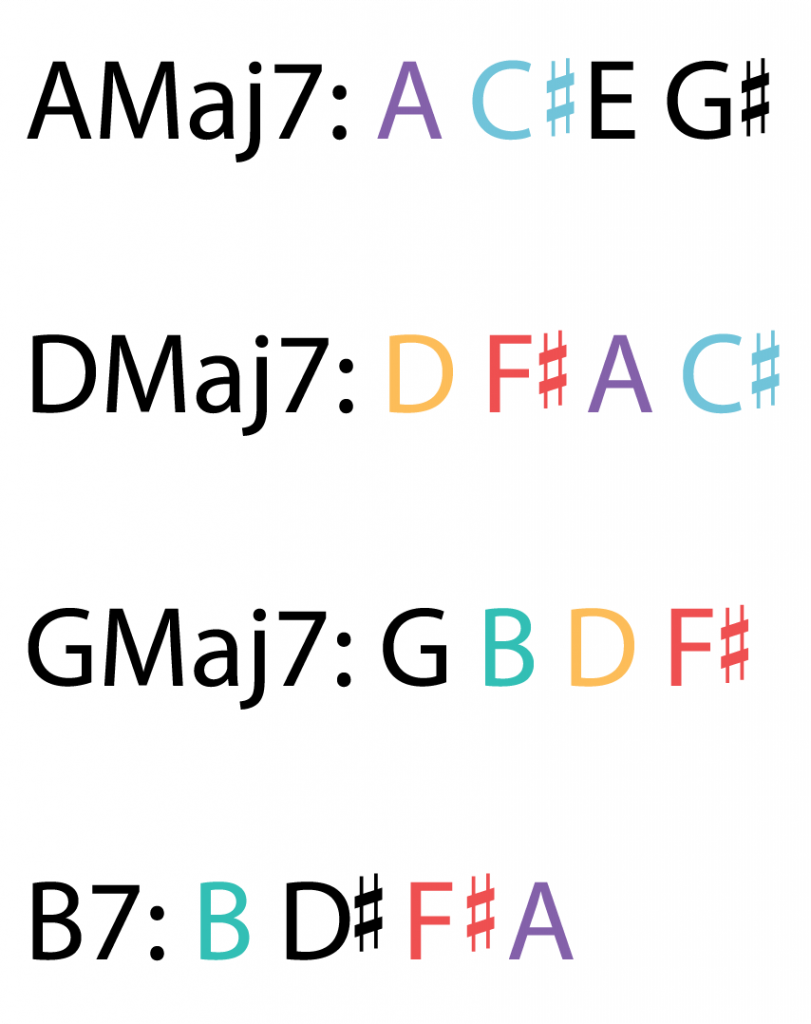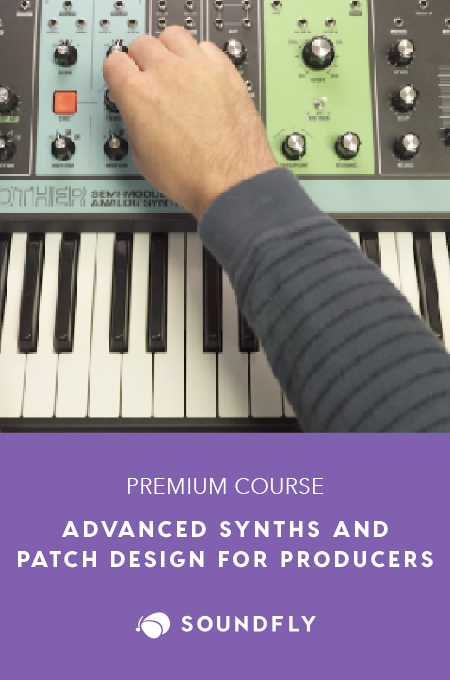
+ Soundfly helps curious musicians meet their goals with online courses like The Creative Power of Advanced Harmony and Pop Vocal Production. Whatever you want to learn, whenever you need to learn it. Subscribe for unlimited access.
With their newly released album, 7, Baltimore dream pop outfit Beach House have reached new emotionally intoxicating heights, but with a sound that feels denser and sludgier than the clean, arpeggiated synths for which they’ve come to be known since forming in 2004. Their simple yet deceptively grandiose songs have earned them accolades from the staunch critics at Pitchfork and Consequence of Sound year after year, and Kendrick Lamar famously sampled their dreamy track “Silver Soul” on his song “Money Trees” back in 2012.
But fast forward to today, their new single, “Dark Spring,” is a brooding shift in the Beach House songwriting playbook. Here, lush organ synths and thin drum machine sounds are replaced with thunderous live percussion and driving distorted guitars. Beach House is still plenty dreamy on “Dark Spring,” but it’s a notably harsher and more urgent effort than what we’re used to hearing from them; perhaps signalling a new urgency in pop music to reflect a broken popular culture in some way. Citing “societal insanity of 2016-2017” as one of 7’s leading influences, it might make sense that this outlook has provided the basis for their sharper, heavier sound.
Let’s listen.
The song opens with a massive drum fill that leads immediately into the defining characteristics of the song: energetically steady drums and propulsive guitars contrasted by syncopated yet fragile vocal stabs that are uttered in a near-whisper by both singer Victoria Legrand and guitarist Alex Scally. Legrand is not necessarily known for her falsetto, as she has primarily relied on her breathy low singing style on past albums, but here it shines through the murky instrumentals perfectly.
The culmination of all these elements in the mix creates textures primed for shoegaze with a loftiness that gives off the impression that the song’s narrators are soaring high above a deep and cosmic trouble. And this would make sense considering they worked with legendary Spaceman 3 member Peter Kember (a.k.a., Sonic Boom) to produce it.
It’s quite easy to draw comparisons between “Dark Spring”’s opening verses and those of Arcade Fire’s “No Cars Go.” There are some slight variations, but they sound almost identical instrumentally, with their churning drums and eighth-note bass pulses and wall-of-sound organ and guitar washes.
“Dark Spring” is set in the key of D♭, and its verse sections boast a simple I | III– (D♭ | F–) progression that slightly deviates to the VI– chord (B♭–) once before the end of the progression. Then, seemingly out of nowhere, the song shifts gears and enters full dream mode with a dramatic B♭–7 to AMaj7 change leading into the chorus.
This section functions as sort of a sonic payoff, with a simple but tricky bit of chromatic gymnastics. From the B♭–7 chord before the chorus, the D♭ and the A♭ hang on (changing to their enharmonic counterparts of C♯ and G♯, respectively). Meanwhile, the B♭ and F, or root and fifth, of the B♭–7 both drop a half step to A and E, respectively.
Overall, this is a very simple alteration of only two notes dropping a half step, but the feeling of it is a bit more like dropping through the floor of a funhouse to the next level below it — quite dramatic and stunning. The relief of it harkens back to more conventional Beach House territory. But in the context of the song and everything we hear in the section preceding it, the chorus of “Dark Spring” feels like a strange and unsettling gift.
We can credit the massive tonal change here due to the fact that the jump from D♭ to A is so large on the circle of fifths, and that instead of a nice and tidy progression confined to the new key, we get an open-ended sequence that resolves in a totally different place, which is one chord above A (B). Like the verses, the chords in the chorus are simple and repetitive, but they provide a wonderfully strange place for the vocal melody to rest.
The song’s chorus is built on a disorienting chord progression of AMaj7 | DMaj7 | GMaj7 | B7, that repeats once. The first three chords flow into each other much like a IVMaj7 to IMaj7 in the key of D, and then again in the key of G. Each chord also shares two notes with the following chord, much like the B♭–7 to AMaj7 change entering into the chorus that got us into this beautiful mess in the first place. Let’s take a look at those shared notes:

At the repeat, only the A gets carried over back into the AMaj7, so that change feels a little less connected. However, a B7 to an AMaj7 carries the sound of V moving to IV in the key of E major, so there’s still at least an ethereal sense of familiarity in the progression.
After the second chorus, we’re lead into an extended instrumental vamp and ending built off of the same driving energy of the song’s verses. Here, the sonic character is solidified distinctly with wailing guitars and straightforward rhythms.
Some Beach House fans might not care for the fraught, anxious energy of “Dark Spring,” but it’s incredible how much this band is able to do with so little. With a relatively limited set of instruments and a few repeating sections in a pretty traditional song structure, Beach House draws us into a vivid and challenging soundscape, and that’s no easy task.
Want to get all of Soundfly’s premium online courses for a low monthly cost?
Subscribe to get unlimited access to all of our course content, an invitation to join our members-only Slack community forum, exclusive perks from partner brands, and massive discounts on personalized mentor sessions for guided learning. Learn what you want, whenever you want, with total freedom.




